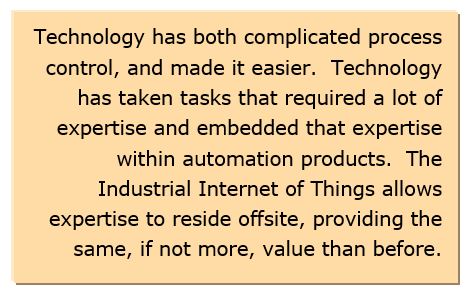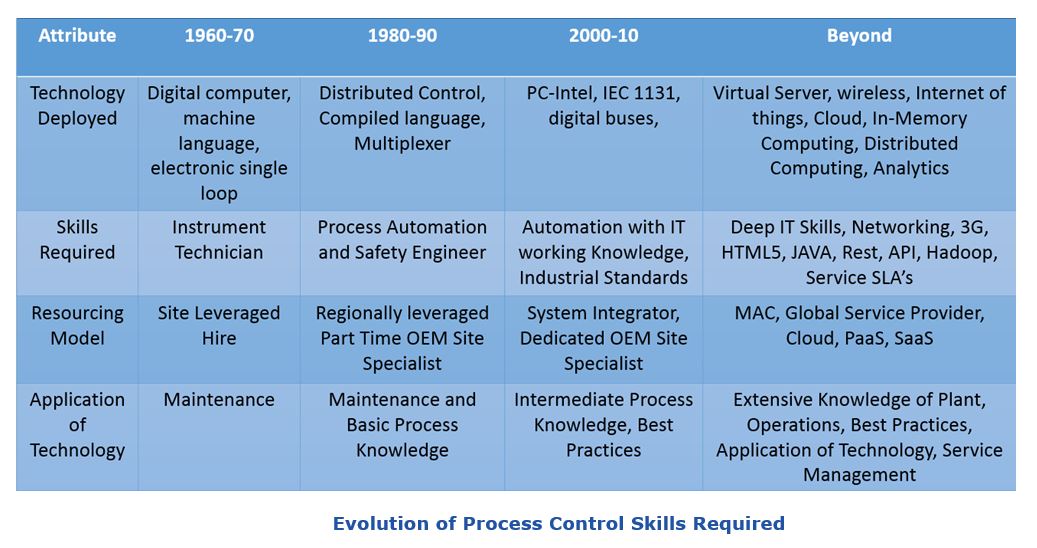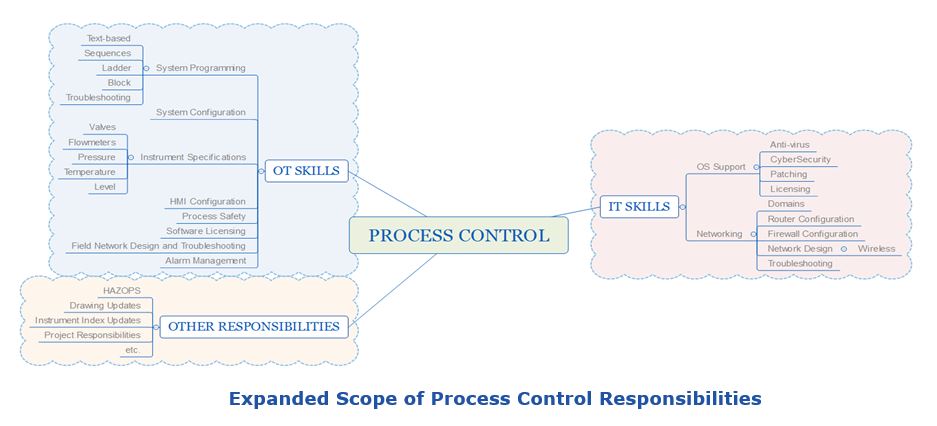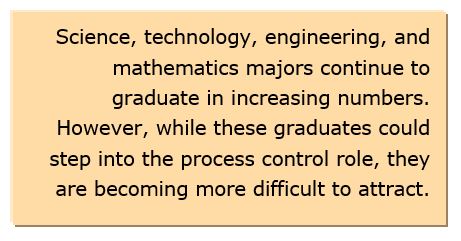

In its purest form, the discipline and role of process control applies control theory to design systems that produce desired 
Technology has both complicated process control, and made it easier. Technology has taken tasks that previously required a lot of expertise and embedded that expertise within automation products. The Industrial Internet of Things (IIoT) allows some expertise to reside off-site, providing additional value.
While most process control organizations have adapted to technology complication, few have stepped back to rethink the skillsets and assignments in the greater context of today’s more digitized and connected world.
Process control techniques enable manufacturing and other industrial processes to be automated. This allows even complex processes to be operated safely and effectively by a minimal number of personnel onsite and/or remotely located.
Unlike in many other professions, there are few educational degrees specific to the process control operator or engineer functions. For the soon-to-be-retiring generation of operations staffs, many had come up through the ranks of the instrument shop. In the not-too-distant past, the required skillset involved understanding what measurement instrument to use, what space was available on the panelboard for the single-loop controller, how much to trim the valve, and what paperwork had to be completed to get the work done.

Certainly, while an understanding of the process helped, the work tended to be electromechanical in nature and relatively straightforward. Ladder logic programming for programmable logic controllers (PLCs) presented the only real challenge. And since these PLCs offered very limited networking capabilities, this hadn’t yet emerged as a major challenge.
However, the 1980s saw a dramatic increase in the adoption of distributed control systems (DCS). Fortunately, these were easily networked by setting some switches and making a few twist connections. However, they also allowed control schemes to quickly become more complex and made it much too easy to configure (often unnecessary and confusing) alarms. Electrical systems increased in complexity, as well.
Moving into the 1990s, instrumentation became more complex as computing and more sophisticated communications capabilities were added to field devices, allowing users to solve process control problems in new ways and/or more efficiently. In the mid-1990s, suppliers began to leverage common off-the-shelf hardware and software in the form of Microsoft PCs and the Windows operating system coupled with Ethernet-based networking.
Today, rather than just a good basic understanding of control theory and instrumentation, process control professionals require a much broader variety of complex skillsets; many associated with very different disciplines. Acquiring and maintaining this diversity of required skills is a major challenge. In smaller facilities, this means process control personnel must become "jacks-of-all-trades and experts in none." This typically leads to stale skillsets and ineffective training.

Science, technology, engineering, and mathematics majors continue to graduate in relatively large numbers. However, while these graduates could step into the process control role, they are becoming more difficult to attract. The technology explosion has been 
Google and other internet companies, for example, seem to be attracting a disproportionate number of these technology-competent graduates with the skillsets that are so desperately needed in the industrial world. Given the choice to work on Google’s exciting self-driving car program in a state-of-the-art research facility, or in a vintage refinery (possibly equipped with a 1980s vintage control system and even older instrumentation), which would you choose? What if the choice included a state-of-the-art chemical complex?
Technology has not only become more diverse, it has also helped automate and/or institutionalize some process control tasks. New software-based tuning capabilities, for example, have taken much of the "art" out of optimizing loop performance. Automation suppliers have put a lot of effort into improving ease of use: simplifying engineering processes, standardizing programming, and turning loop configuration practically into a rote activity. Control system maintenance tasks have also become easier due to new remote monitoring and condition-based maintenance approaches.
Thanks to digital transformation, today’s industrial facilities can connect quickly and easily to remote experts and technology, helping mitigate the shortage of the experienced professionals and recent technology graduates. Predictive and prescriptive analytics institutionalize knowledge that could take many years for an individual to obtain and are available 24/7 anywhere in the organization. Through internet technologies, off-site experts can be brought in collaboratively and view systems simultaneously with on-site staff. New systems can be configured and tested from remote places, as well.
The process control organization has undergone little change over the past several decades, while its responsibilities have expanded quite a bit.
Based on ARC research and analysis, we recommend the following actions for owner-operators and other technology users:
Other recent ARC Advisory Group discuss related topics. To see these reports, click on the following links: IT/OT Organizational Design Evolves, and The Challenge of Organizational Design for Managing the Automation Lifecycle.
If you would like to buy this report or obtain information about how to become a client, please Contact Us
Keywords: Process Control, Labor Shortage, Operational Technology (OT), ARC Advisory Group.

